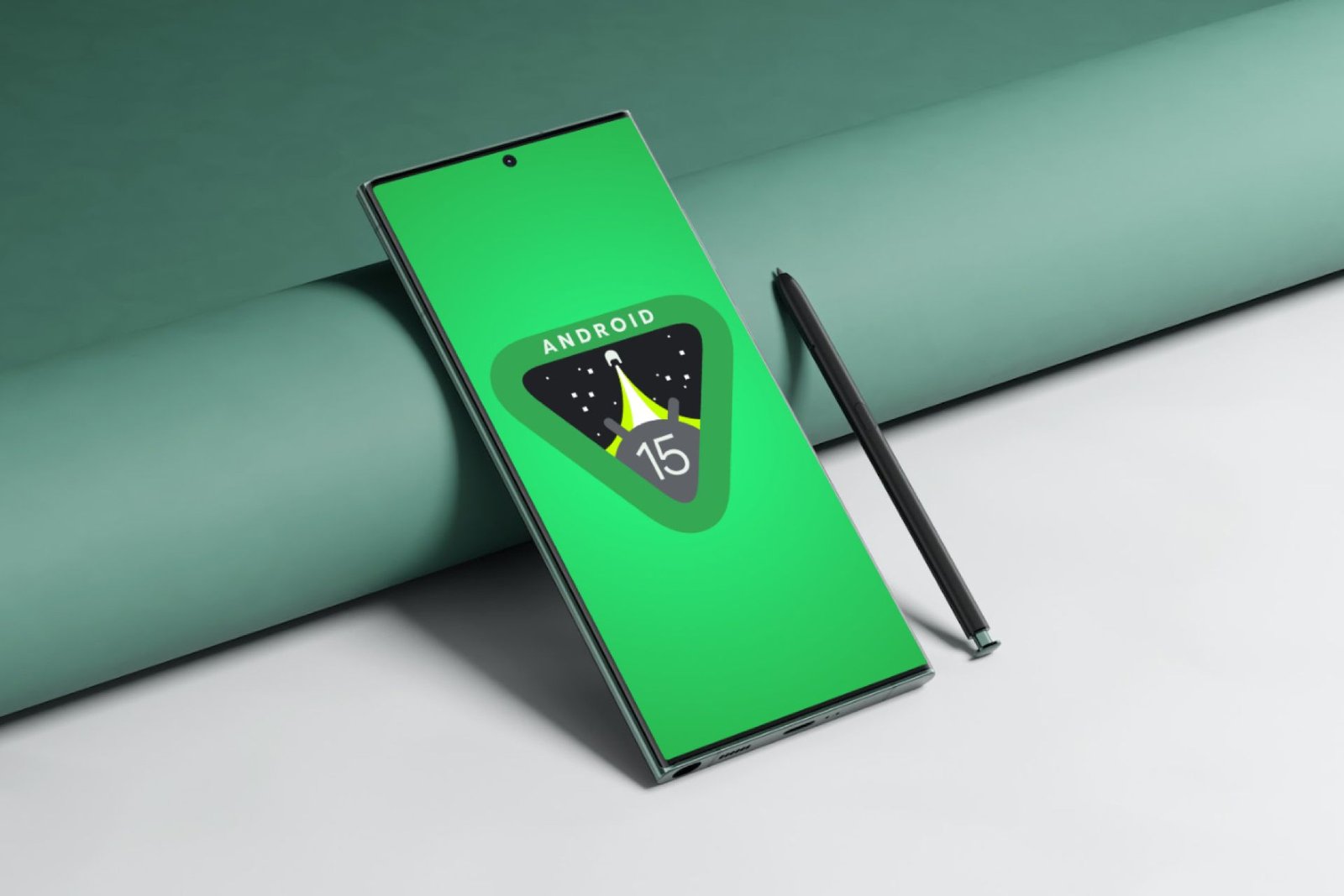
New features, how to install, and more
-
by Anoop Singh
- 6
Just months after the official release of Android 14, Google has already started testing the next version, Android 15. The first Android 15 Developer Preview for supported Pixel devices is now available, giving us a sneak peek at what’s to come before the official announcement, which is expected to be at Google I/O 2024.
Here, we take a look at some of the new features of Android 15, though it’s likely that Google is hiding a few features under the wraps for now. Additionally, we’ll provide instructions on installing the Developer Preview and list the supported devices. So, without further ado, let’s begin.
What is Android 15 called?

Google stopped using internal codenames to promote Android versions a while ago, but they still use them internally. For instance, Android 14 was dubbed “Upside Down Cake” for the letter U, and now, for the letter V, we have Android 15, nicknamed “Vanilla Ice Cream.”
However, the official logo for Android 15 doesn’t resemble ice cream at all. Instead, it features a triangular shape outlined in green with the Android mascot sporting a “15” on its back. It appears to be gazing toward what seems to be a gate or the end of a bridge with stars on each side.
Android 15: New Features
While Android 14 brought significant changes compared to Android 13, Android 15 appears to be more of a modest update, at least at this stage. Google says Android 15 focuses on improving four areas across the OS: improving media experiences, minimizing battery impact, maximizing smooth app performance, and protecting user security. Here’s everything new we have found in Android 15 so far:
Improving camera feed in third-party apps
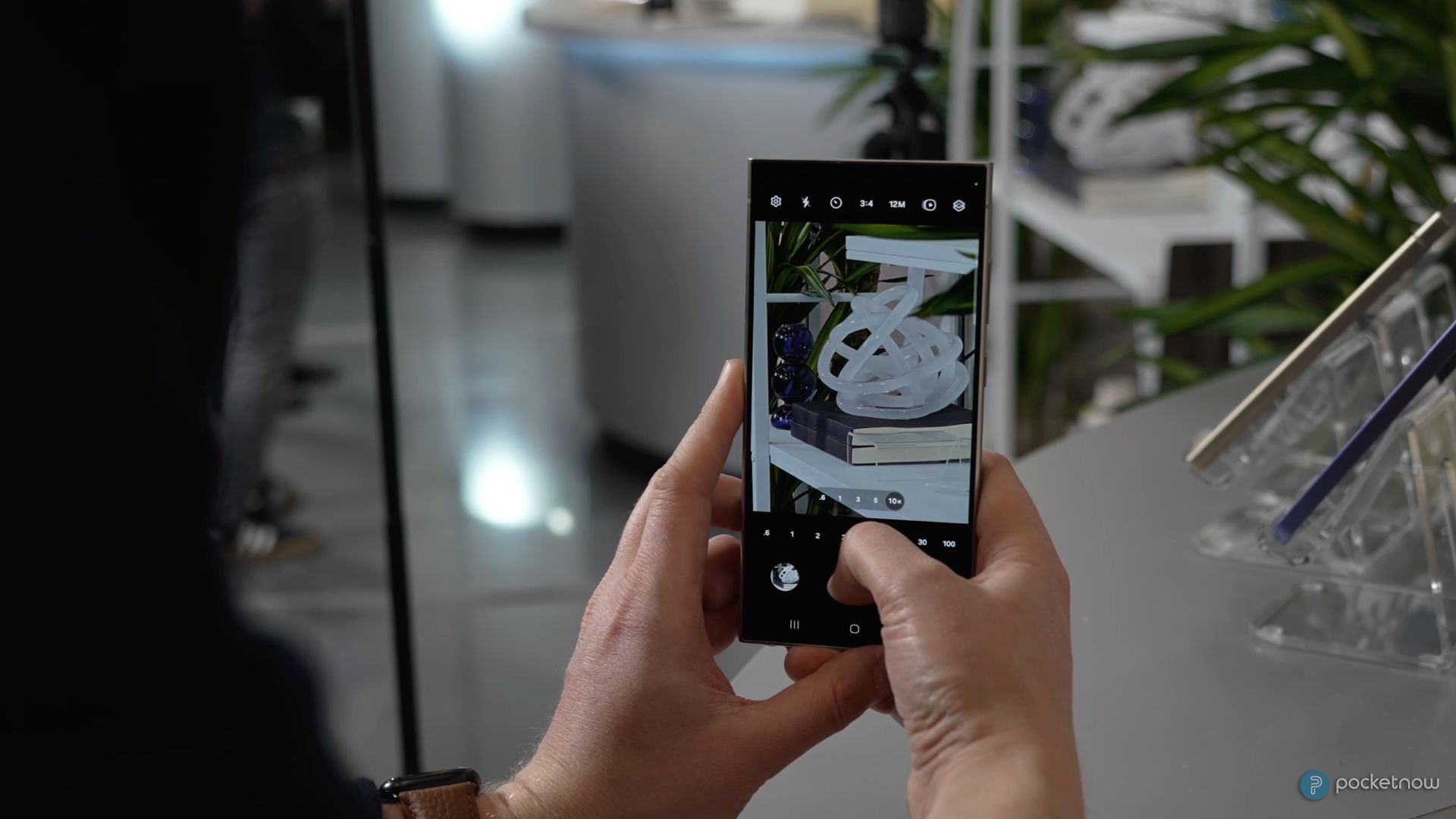
Pocketnow / Jaime Rivera
Samsung Galaxy S24 is undeniably one of the best phones right now, but one feature that makes it stand out is that apps like Instagram and Snapchat can utilize advanced camera features — ones available in the main camera app, such as Nitography and Super HDR — within social media apps. However, on other Android smartphones, things are very different due to limited camera controls available to the social media apps.
With Android 15, Google is working to make camera controls better for third-party apps by offering more accessible APIs. Two new features have been added to the camera API: enhancements for low-light conditions to improve the brightness of camera previews and the ability to control flash intensity. Further updates may introduce additional enhancements.
Partial screen sharing
Android 15 will allow users to record or share only a specific app window or a portion of a screen rather than sharing the whole screen. This feature debuted first on Google Pixel devices with Android 14, but will now be available on other Android devices as well with Android 15.
Notification cooldown
Do you ever find your phone exploding with notifications during peak chatting times? Well, Google’s coming to save you as Android 15 introduces a handy new feature called “notification cooldown.” This feature lowers the notification volume when you receive multiple notifications from the same app in quick succession.
The brightness slider now gives vibration feedback
A minor but a noteworthy feature is that now, when you adjust the brightness slider, you’ll feel a slight haptic feedback. It’s a subtle touch, but it shows Google’s commitment to refining both hardware and software for a more polished Android experience.
Universal toggle to control keyboard vibrations
Android 15 introduces a new “keyboard vibration” setting wherein the user can disable vibrations for all the keyboards installed on your phone. When this setting is disabled, no keyboards will vibrate when tapped. However, if enabled, users can still manage vibration settings within each keyboard app individually.
Foldables get new continuity features
Foldable devices are becoming increasingly popular in the Android market, and Google has been fine-tuning the operating system for large-screen foldables since Android 12L. Now, Android 15 brings in a handy new continuity feature. Now you can control what will happen to the front screen when you close the foldable. You can choose to have the front display turn on whenever you fold your device, have it turned on for specific apps like games and videos, or simply lock it every time you fold the screen.
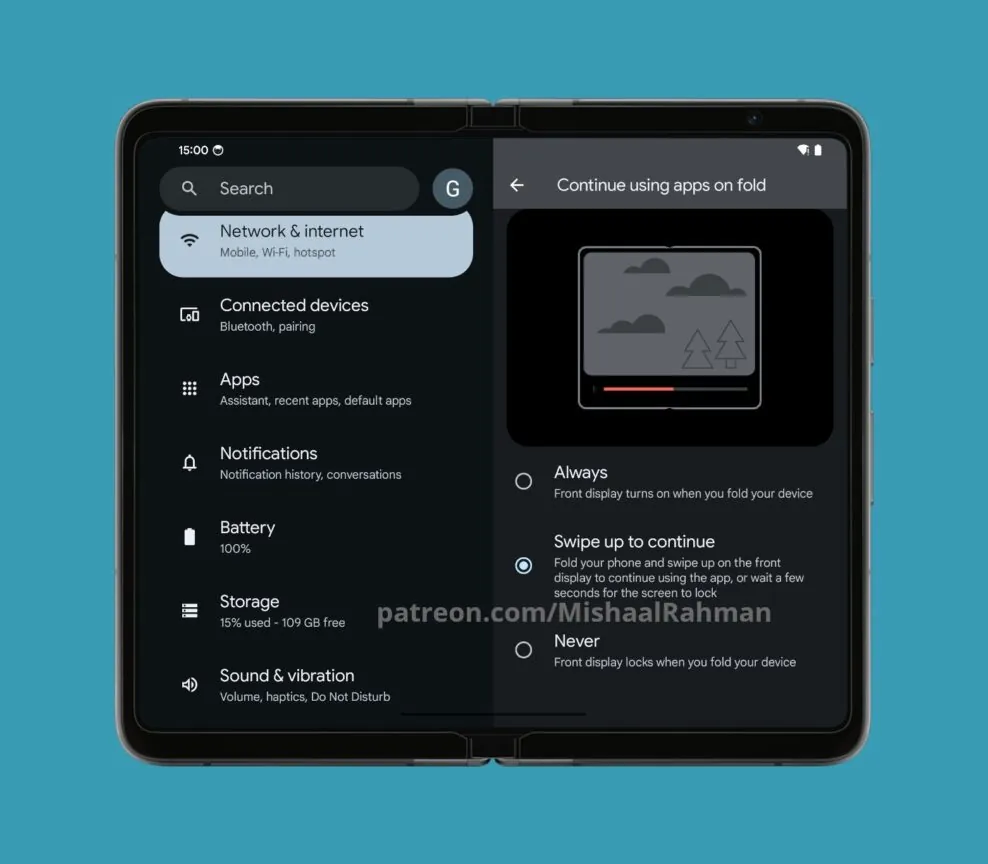
It is worth noting that Google is also testing a OnePlus Open-like feature wherein users will be able to continue using apps on the cover screen with a “swipe up to continue” gesture (via Mishaal Rahman). However, this feature is still not available in Android 15 Developer Preview 1.
Android Dynamic Performance Framework improvements
Android 15 also improves the Android Performance Durability Power Framework (ADPF), adding a new power-efficiency mode. This mode will allow the OS to reduce power consumption by long-running background apps. Moreover, the system can now report both GPU and CPU work durations, allowing Android to optimize CPU and GPU frequencies to better handle workload requirements.
Other Features
Android 15 also includes a few other behind-the-scenes changes. For example, the new Health Connect API adds support for more fitness-related metrics such as average step cadence, trans fats, and more. Android 15 also supports the fs-verity feature in the Linux kernel, meaning files can now be protected by custom cryptographic signatures, preventing any type of file corruption. Furthermore, Android 15 also adds support for the latest version of Privacy Sandbox.
Android 15: List of Supported Devices
For now, Android 15 is only available for Google Pixel devices with Tensor chipsets. While Google might expand the Developer Preview program to devices from other brands at a later stage, there is no confirmation yet. Right now, you can install the first Android Developer Preview only on the following devices:
Android 15: How to Install
Unlike the Android Beta program, which allows users to enroll and download beta software on their Pixel devices just by signing up on the Android Beta website, installing Developer Preview is a bit tricky. These previews are mainly for app developers and are quite unstable for daily use. However, if you’re keen on trying Android 15, here’s a simplified guide:
First, enable USB debugging and OEM unlocking on your device. Then, install the Android Flash Tool on Google Chrome on your desktop. Once set up, visit this website and follow these steps:
- Connect your Pixel device with your desktop and allow ADB access when the pop-up appears.
- Now click “Add new device,” select your device, and click “Connect.”
- Next, on your phone, enable “Always allow from this computer” and tap “Allow.”
- Your Pixel should show up on the screen. Now under popular builds, select “Developer Preview.”
- Click “Install build” and then “Confirm.”
- Android 15 will be installed on your Pixel.
For a more in-depth guide, check out the explainer from our sister-website Android Police covering the steps to Android 15 on Pixel devices in great detail.
When will Android 15 be released?

Currently, Google has only released the first Developer Preview of Android 15. The company will release another Developer Preview next month. And, as per the timeline shared by the company, the Android 15 beta is expected to drop in mid-March, with the final release likely scheduled for later this year, possibly coinciding with the Pixel 9 event in the fall.
-
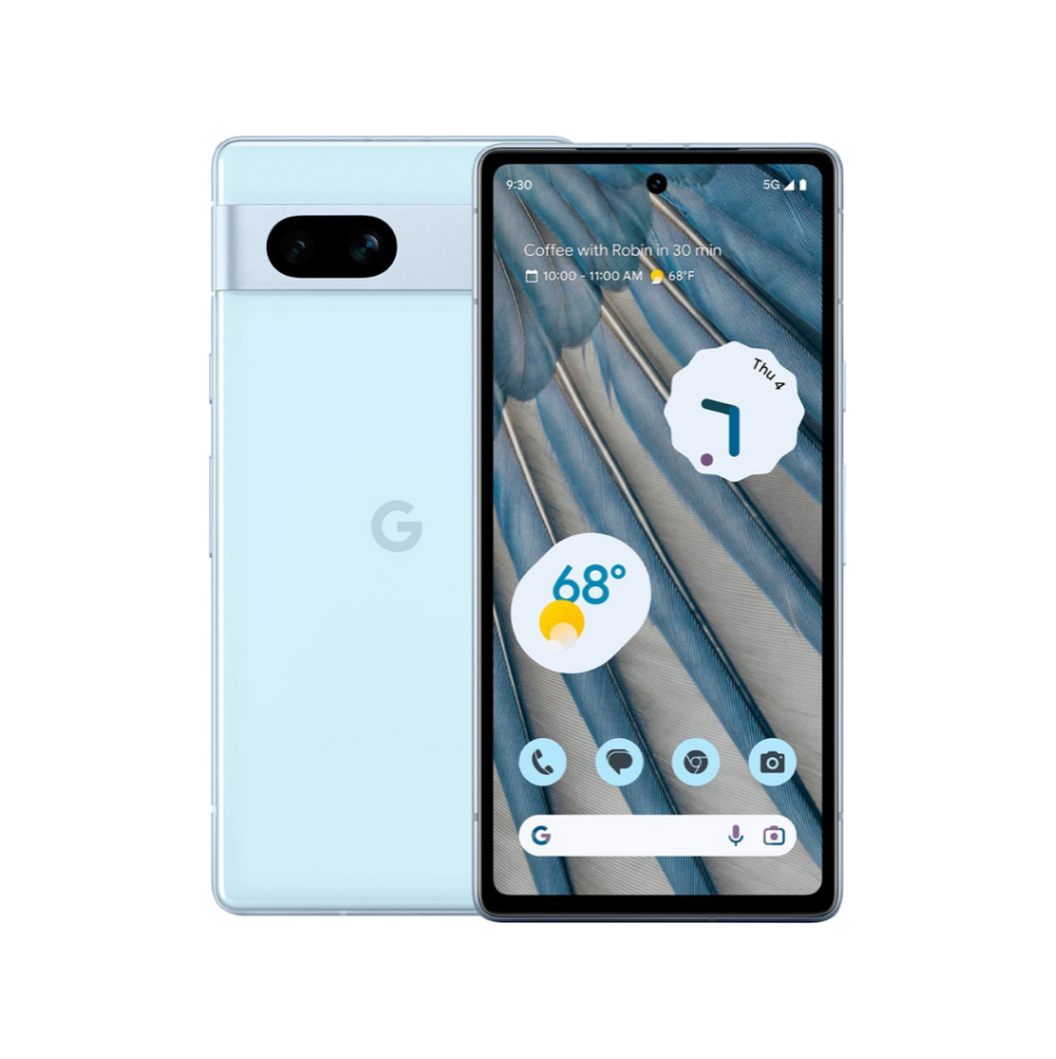
Google Pixel 7a
$374 $499 Save $125
The Pixel 7a is the new affordable smartphone from Google, featuring much-awaited features such as a 90Hz responsive display, a more powerful camera setup, and support for wireless charging. The Pixel 7a is powered by the Tensor G2 chipset, and it’s the best device in the A series yet.
-
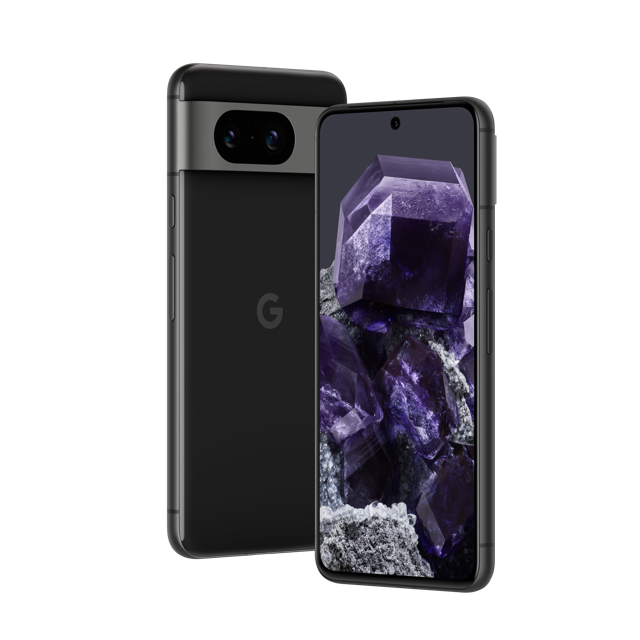
Google Pixel 8
$545 $699 Save $154
The Google Pixel 8 features a 6.2-inch display with adaptive refresh rate (up to 120Hz). It also ships with the improved Google Tensor G3 and a 4,575 mAh cell that will allow for all-day use. And if you enjoy capturing images on your smartphone, its cameras, enhanced by AI will help capture the best moment in your life.
-

Google Pixel 8 Pro
$799 $999 Save $200
The Google Pixel 8 Pro, featuring the third-generation Tensor G3, is Google’s flagship phone for 2023. It introduces some small improvements overall, a brand-new processor to set it apart, a thermometer sensor, and promises an outstanding smartphone camera experience.
Just months after the official release of Android 14, Google has already started testing the next version, Android 15. The first Android 15 Developer Preview for supported Pixel devices is now available, giving us a sneak peek at what’s to come before the official announcement, which is expected to be at Google I/O 2024. Here,…
Just months after the official release of Android 14, Google has already started testing the next version, Android 15. The first Android 15 Developer Preview for supported Pixel devices is now available, giving us a sneak peek at what’s to come before the official announcement, which is expected to be at Google I/O 2024. Here,…
